Cyclists
Many South Australians cycle for recreation and transport. Around 17% of the population ride their bicycles weekly.
Cyclists have limited protection. They are more likely to suffer injuries in the event of a crash, particularly if the crash involves a motor vehicle. Most serious injuries that involve a bicycle rider occur in metropolitan Adelaide and during peak times.
Cycling rules and safety
Cyclists have the same rights and responsibilities as other road users. The law defines bicycles as vehicles on the road and any road-related area.
As cyclists share roads and paths with other road users, there are also specific rules for them. Cyclists must understand and behave according to the road rules for their own and everyone's safety.
When cycling on the road, there are numerous safety rules for cyclists, such as:
- keeping to the left
- using hand signals
- passing vehicles on the left
- cycling abreast
- not causing a hazard.
When cycling on footpaths or shared paths, cyclists must:
- share the path with other users
- give way to pedestrians.
Cyclists must:
- use an approved bicycle helmet
- have an effective brake and warning device on their bike
- use lights at night and in hazardous weather.
My Licence contains information on road rules, videos and road rules refreshers for all road users. It also provides links to specific rules for cyclists.
Bike helmets
When riding, you must wear an approved bicycle helmet. The helmet should be properly adjusted and securely fastened.
South Australia has adopted new bicycle helmet standards. Helmets must comply with one of the following Australian or overseas standards:
| Standard | Helmet use |
|---|---|
| AS/NZS 2063:2020 | Bicycles and wheeled recreational devices (Australian standard) |
| AS/NZS 2063:2008 | Bicycles and wheeled recreational devices (Australian standard) |
| EN 1078:2012+A1:2012 | Pedal cyclists, skateboards and roller skates (European standard) |
| U.S. Consumer Product Safety Commission (16 C.F.R. Part 1203) | Bicycles (American standard) |
| ASTM F1447-18 | Recreational bicycles or roller skating (American standard) |
| Snell B-95, 1995 Bicycle Helmet Standard, 1998 revision | Bicycles (Snell standard) |
The standards appear on the helmet. Bicycle helmets should not be sold or offered unless they meet one of these standards.
Bicycle passengers must also wear a compliant helmet.
Plan your bike ride
When cycling for fun or transport, a little planning goes a long way for a safe and enjoyable ride. It's easy to get started, whether you're new to cycling or dusting off the old bike.
To help you prepare, download Cycle Instead: A guide for new and rusty riders (PDF, 4.9 MB).
Where to cycle
The Cycle Instead Journey Planner is an interactive tool that uses the Bikedirect network to help plan cycling trips. It uses a variety of options that consider:
- fitness and confidence levels
- road conditions
- speed of travel.
Visit SA.GOV.AU to view these cycling maps:
- 14 Bikedirect cycling maps provide options for people with different needs and abilities. The maps show main roads, bicycle lanes, local streets and off-road paths.
- Five printed cycling and walking maps help people make active travel choices in Adelaide’s metropolitan suburbs. They include estimated travel times. To order copies, email dit.roadsafety@sa.gov.au.
Trails SA also more than 600 trail experiences across South Australia, from local sealed paths to off-road adventures.
Your local council may also provide local mapping options for cycling.
Making roads safer for cyclists
Connected routes and calmer traffic mean safer cycling. Slower traffic in urban areas make people feel more comfortable riding bikes, This makes them more likely to choose active travel to get around, and is good for the environment and health.
The Department for Infrastructure and Transport invests in safety for cyclists through changes to:
- roads
- intersections
- separated bicycle routes
- crossing facilities.
A range of these treatments are listed below.
To learn how the government is improving safety for cyclists, read South Australia's Road Safety Action Plan 2025-2027.
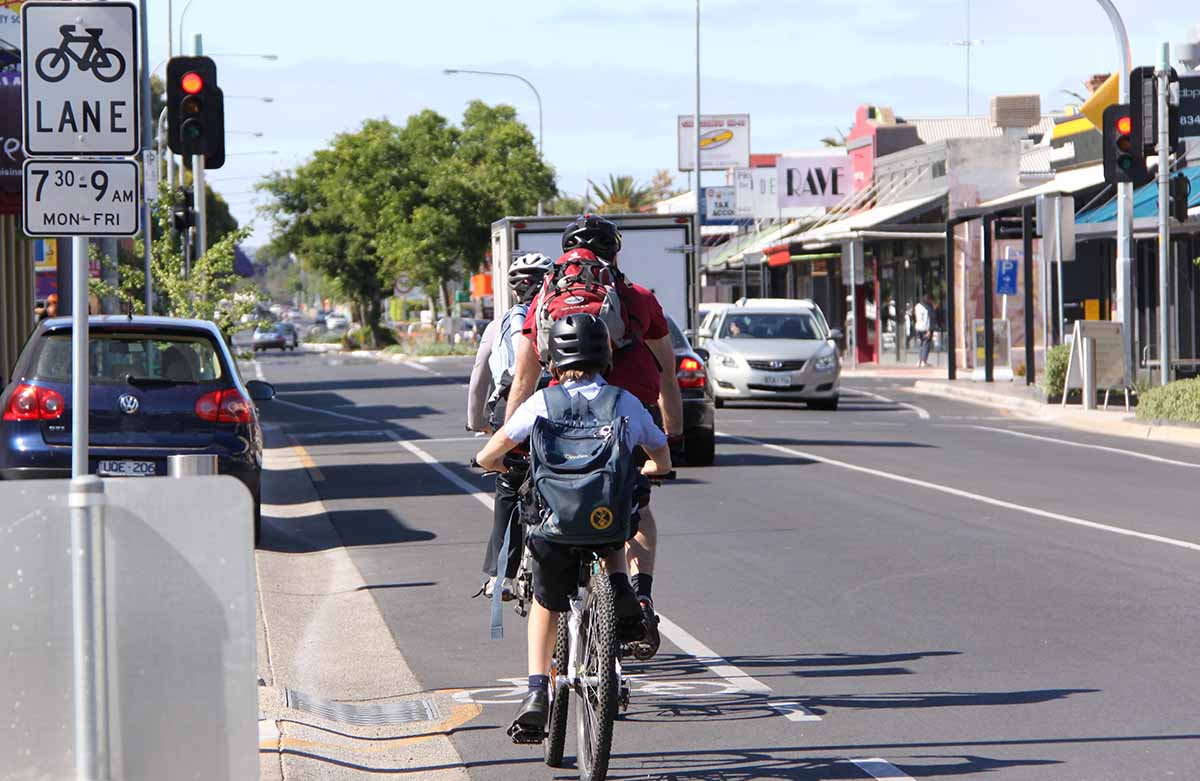
Bicycle lanes help cyclists and other road users share the road.
They are marked with a continuous painted line, bicycle symbol and bicycle lane signs. The signs often indicate specific times for operation.
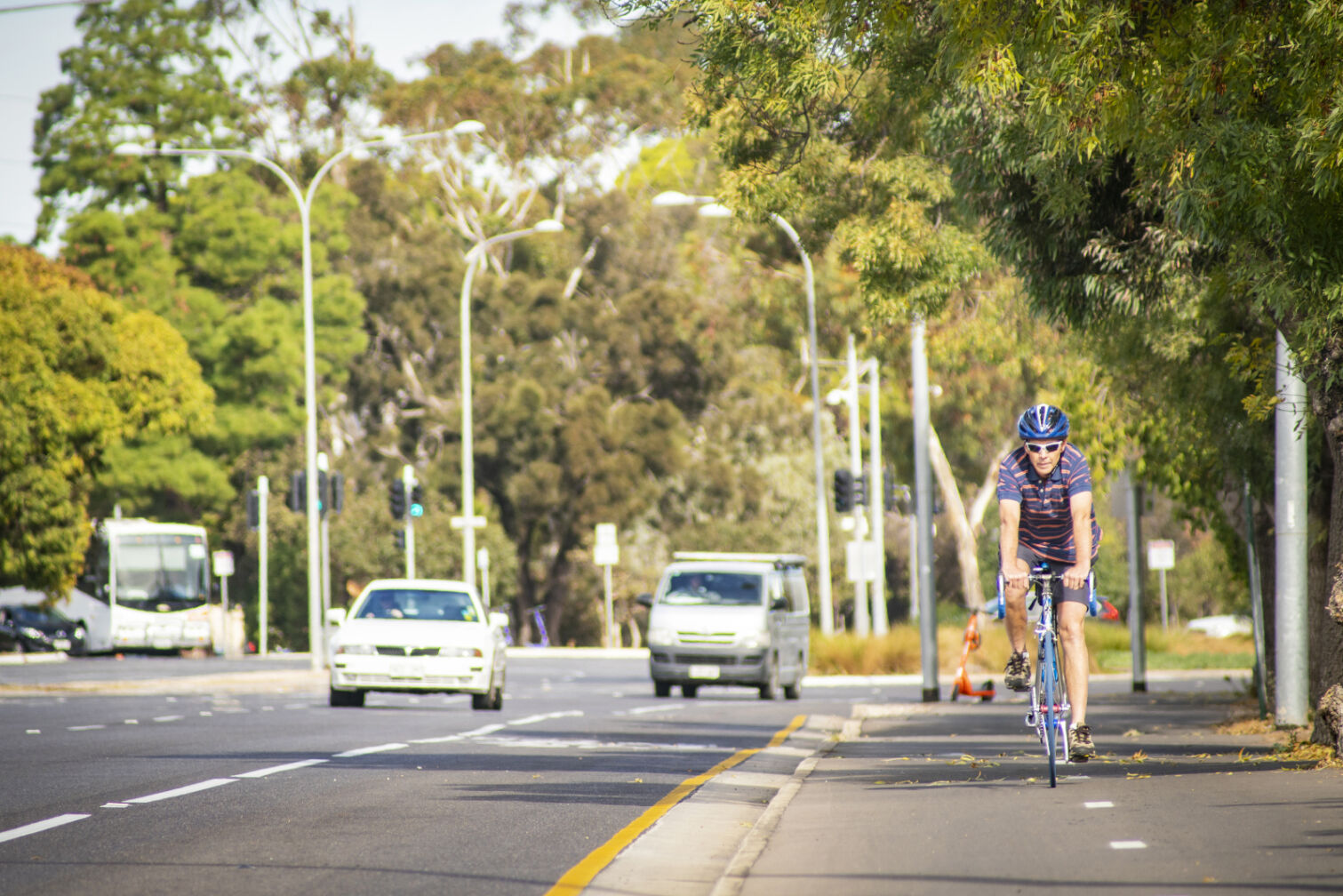
Separated bicycle lanes provide a safe, separated space for cyclists to travel alongside key arterial roads.
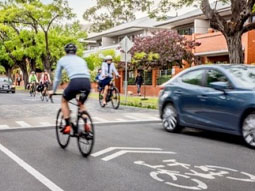
Bicycle boulevards connect and improve traffic-calmed local streets with off-street path links and main road crossings. This creates direct cycling routes that are an easy alternative to busy roads.
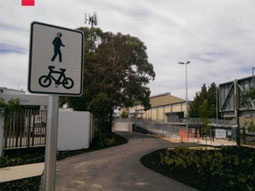
Greenways are dedicated cycling and walking routes. They run alongside public transport corridors or linear open space, such as along rivers.
Greenways connect quiet local streets with off-street paths and main road crossings. This creates direct cycling routes and better access to public transport, stops and stations.
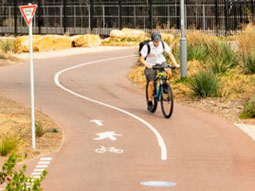
Shared used paths are off-road spaces for cyclists to separate themselves from vehicle traffic.
Shared paths are designated for pedestrians and cyclists.
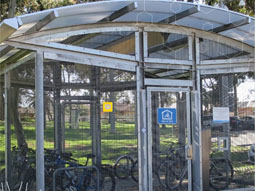
End of trip facilities enable cyclists to extend their journey.
Bike 'n' Ride facilities at key Adelaide Metro interchanges provide secure bicycle parking and encourages public transport use
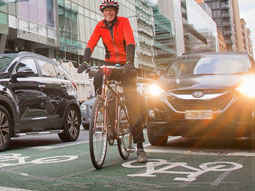
Bicycle storage areas (bike boxes) at intersections help cyclists be more visible to drivers.
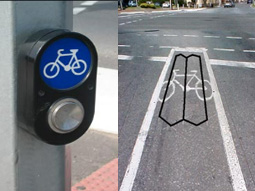
Bicycle detection technology can detect cyclists at some signalised crossings through push buttons and sensors under the road surface.

